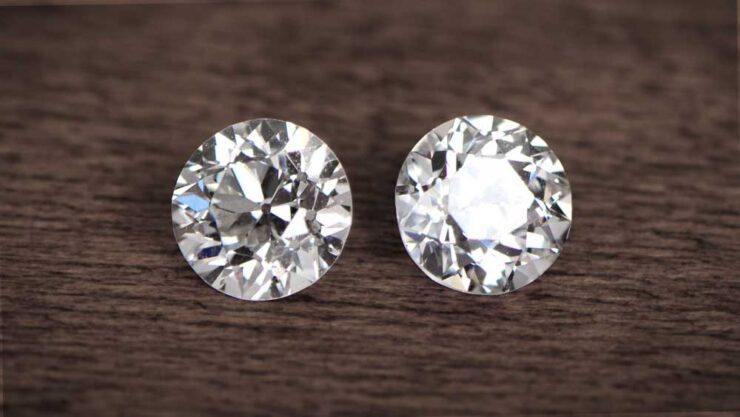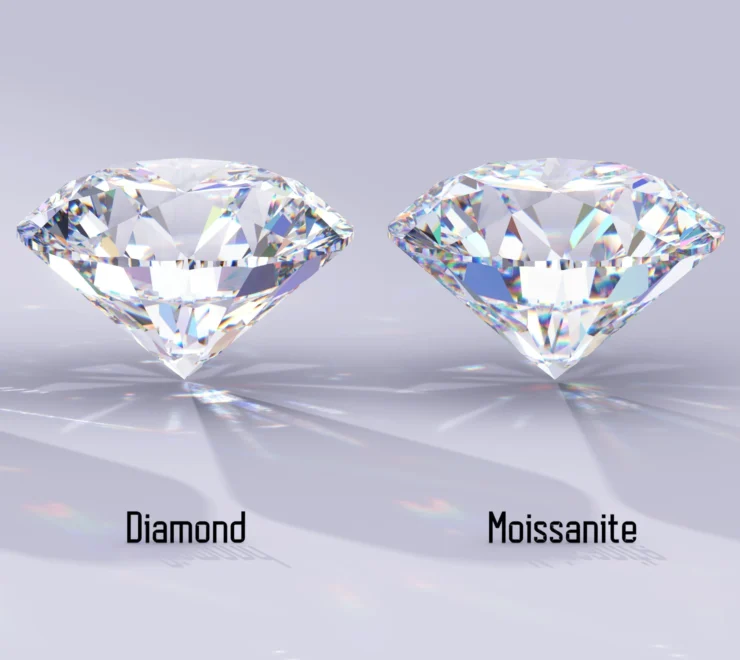When it comes to choosing an engagement ring or a piece of jewelry, the choice between moissanite and diamonds often arises. Both stones possess exceptional beauty and durability, but they differ significantly in terms of origin, cost, brilliance, and environmental impact. In this article, we will explore the distinct characteristics of both, enabling you to make an informed decision based on your preferences and budget.
Origins
Moissanite is a gemstone that occurs naturally in very small quantities, primarily found in meteorites. However, the moissanite used in jewelry is typically created in a laboratory through a process called silicon carbide synthesis. This method allows for the production of high-quality, ethical stones. If you are currently shopping for some high-quality jewelry, look no further than MoissaniteCo.com.
Diamonds are formed deep within the Earth’s mantle under extreme pressure and temperature conditions. They are then brought to the surface through volcanic eruptions or other geological processes. Natural diamonds are highly sought after, but they can also be created in a lab using high-pressure high-temperature (HPHT), or chemical vapor deposition (CVD) methods.
Appearance and Brilliance

Moissanite possesses a dazzling brilliance that often exceeds that of a diamond. Due to its unique optical properties, moissanite exhibits a higher refractive index, resulting in exceptional fire and brilliance. It produces vibrant flashes of rainbow-colored light, making it a captivating alternative.
Diamonds are renowned for their timeless beauty and brilliance. Their refractive index is slightly lower than that of moissanite, leading to a distinct sparkle characterized by white light reflections. The clarity contributes to its brilliance, as flawless diamonds allow light to pass through without hindrance.
Cost
One of the primary advantages of moissanite is its affordability. Compared to diamonds, moissanite is considerably less expensive. The cost of this jewelry is typically a fraction of what a diamond piece of similar size and quality would cost. This affordability factor allows individuals to opt for larger moissanite stones within their budget.
Diamonds are known for their high price tag, mainly influenced by factors such as carat weight, cut, color, and clarity. The rarity and market demand for diamonds significantly contribute to their cost. As a result, they are often seen as a luxury item and may require a substantial financial investment.
Durability

Moissanite is an exceptionally durable gemstone, ranking 9.25 on the Mohs scale of hardness. It is highly resistant to scratching, chipping, and breaking, making it an excellent choice for daily wear and engagement rings.
Diamonds are the hardest substance on Earth, ranking 10 on the Mohs scale. Their exceptional hardness makes them highly resistant to scratching and ensures long-term durability. This property is one of the reasons why the gems are popular for engagement rings, which are typically worn daily.
Final Summation
When choosing between the two, it is essential to consider factors such as origin, appearance, cost, and durability. Moissanite offers an affordable option without compromising on beauty and durability, while diamonds exude timeless elegance and hold significant sentimental value. Ultimately, the decision depends on your personal preferences, budget, and values. Whether you choose the dazzling brilliance of moissanite or the enduring allure of diamonds, both stones are sure to make a statement and bring joy for years to come.

